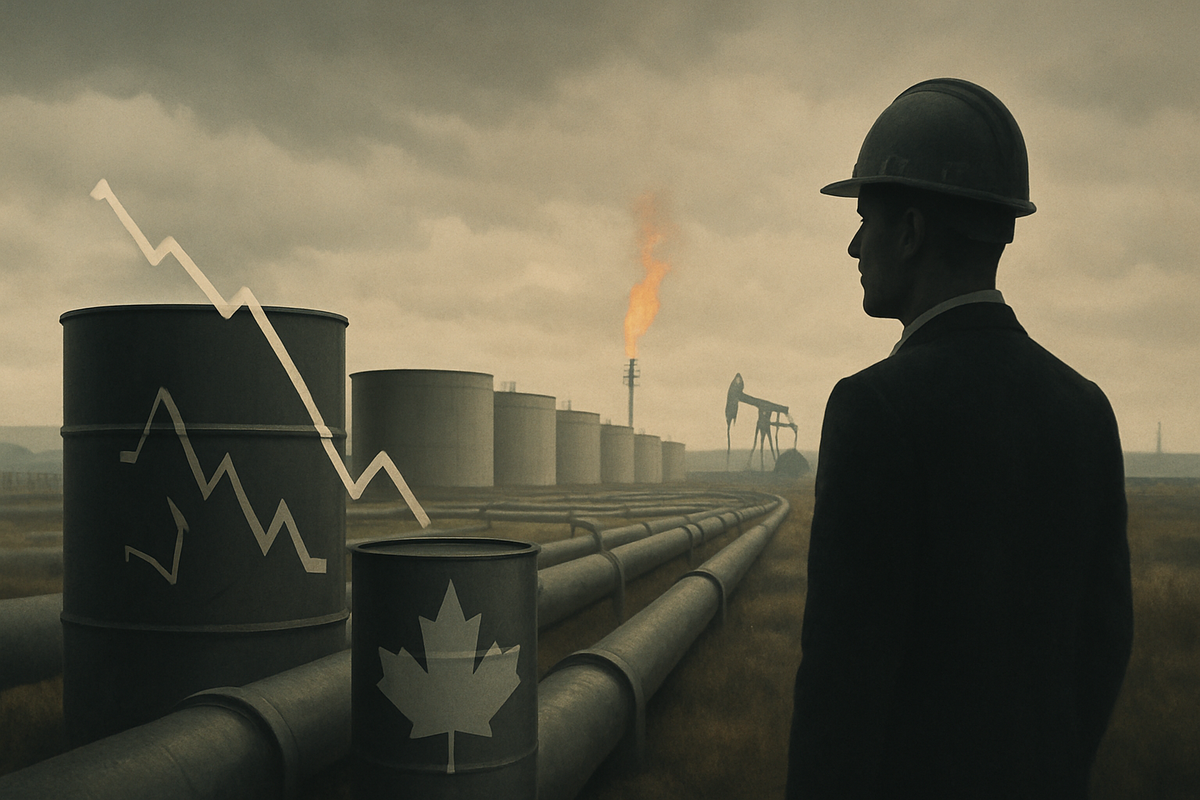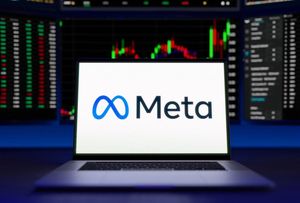
Calgary, Alberta – October 20, 2025 – The Canadian oil and gas industry is navigating a challenging landscape as late 2025 unfolds, grappling with a persistent spending squeeze driven by dipping global commodity prices and an abundant supply. This confluence of factors is significantly impacting the budgets and forecasts of Canadian producers for the upcoming year, compelling a strategic re-evaluation of capital allocation and operational priorities.
While overall capital expenditures are projected to see a modest increase in 2025, a cautious sentiment pervades the sector. Companies are balancing the imperative of maintaining existing production with the need to deliver shareholder returns, all while contending with market volatility and an evolving regulatory environment. The immediate implications point to a period of disciplined investment, strategic diversification, and an intensified focus on efficiency to weather the current economic headwinds.
Navigating a Volatile Market: A Detailed Look at the Spending Squeeze
The current spending squeeze in the Canadian oil and gas sector is the culmination of several years of market shifts and policy changes. Since a peak in investment exceeding $80 billion in 2014, the industry has faced a prolonged decline in capital expenditures, exacerbated by various global and domestic events.
The 2014-2015 oil price crash initiated a rapid fall in investment, followed by significant natural gas price discounts and pipeline constraints between 2017 and 2019. The COVID-19 pandemic in 2020 further depressed investment to a two-decade low of $24 billion. While a recovery ensued, it has been uneven. Late 2024 saw the passage of Bill C-59, allowing "greenwashing" claims against energy companies, prompting some to remove environmental reporting. By early-to-mid 2025, robust non-OPEC+ production, coupled with OPEC+'s plans to increase output by 500,000 barrels per day, contributed to a global oil surplus, depressing prices. Simultaneously, record-high Canadian natural gas production, outpacing local demand, led to persistently low AECO prices, sometimes even below zero, forcing some producers to curtail output.
Key players in this dynamic include major Canadian producers such as Suncor Energy Inc. (TSX: SU), Imperial Oil Ltd. (TSX: IMO), and Cenovus Energy Inc. (TSX: CVE), who are adjusting their capital plans. Government bodies, including the Federal Government of Canada and Alberta, are also central, with federal policies like the proposed emissions cap and carbon pricing significantly influencing investment decisions. Industry associations like the Canadian Association of Petroleum Producers (CAPP) and the Canadian Association of Energy Contractors (CAOEC) are advocating for policy resets to attract investment. Research and advocacy groups, including RBC Capital Markets and the International Institute for Sustainable Development (IISD), provide critical analysis, highlighting the risk of "stranded assets" and forecasting conservative spending plans for 2026.
Initial market reactions as of late 2025 reveal a strategic shift, with Canadian drillers increasingly reallocating resources towards natural gas exploration and production, partly driven by the anticipated startup of LNG Canada. Despite investment challenges, Canadian oil production reached a record high of 6.5 million barrels per day (MMbpd) in July 2025, thanks to the operational Trans Mountain Pipeline Expansion (TMX). However, investor sentiment remains predominantly bearish due to oversupply, tepid prices, and geopolitical uncertainties, leading to a focus on shareholder returns over aggressive growth. Industry leaders are urgently calling for a "significant policy reset" from the federal government to foster a more attractive investment environment.
Winners and Losers: Corporate Strategies in a Tight Market
The current market conditions are creating a divergence in fortunes among Canadian oil and gas firms, with integrated majors generally better positioned to weather the storm than pure-play natural gas producers.
Companies with integrated business models, robust financial health, and a focus on cost control and strategic project execution are demonstrating resilience. Imperial Oil (TSX: IMO), for instance, benefits from its integrated refining and production assets, offering insulation from upstream price volatility. With a "GREAT" financial health score and a 29-year track record of dividend increases, Imperial's strategy for 2025 includes enhancing operating performance, increasing production, and implementing cost-cutting measures, aiming for $150 million in annual expense savings by 2028.
Similarly, Suncor Energy (TSX: SU), another integrated giant with significant oil sands operations and a substantial downstream network, is focused on generating free funds flow and returning excess capital to shareholders. Its C$6.1–6.3 billion capital program for 2025 balances asset sustainment with high-value investments, benefiting from improved market access via TMX. Cenovus Energy (TSX: CVE) also exemplifies this trend, with a capital investment plan of $4.6 billion to $5.0 billion for 2025, targeting production increases and leveraging its integrated model and cost-efficiency efforts. MEG Energy (TSX: MEG), a pure-play oil sands producer, is well-positioned through its capital-efficient Christina Lake asset, strong free cash flow generation, and a commitment to shareholder returns, with plans to expand capacity by 2027. These companies are likely to "win" by maintaining profitability and delivering consistent shareholder returns despite price fluctuations.
In contrast, pure-play natural gas producers, particularly those heavily exposed to the AECO benchmark, are facing significant headwinds. Companies like ARC Resources (TSX: ARC) and Tourmaline Oil (TSX: TOU), while having strategies to access higher-value U.S. markets, have had to curtail production or defer drilling due to chronic oversupply and extremely low AECO prices. The delayed full ramp-up of the LNG Canada export terminal has exacerbated this situation, severely impacting revenues and cash flow for many gas-focused firms. While the long-term outlook for Canadian natural gas is expected to improve with increasing LNG exports, the near-term presents a challenging "losing" scenario for these producers, forcing them to prioritize survival through production curtailments and capital discipline. The industry also faces broader challenges from cost inflation, ESG pressures, and political and trade uncertainties, which impact all players to varying degrees.
Broader Implications: Trends, Ripples, and Policy Crossroads
The Canadian oil and gas spending squeeze is not an isolated event but rather a critical juncture reflecting broader industry trends, with significant ripple effects across the economy and a complex interplay with regulatory frameworks.
Globally, the oil and gas industry is navigating a dual reality: sustained demand for hydrocarbons, particularly in emerging markets, alongside an accelerating energy transition. While the IEA projects global oil demand to exceed 103 MMbpd in 2025, there's also a clear push towards decarbonization and clean energy solutions. Canada, with its diverse energy resources, is exploring roles in blue and green hydrogen and small modular reactors, signaling a long-term diversification strategy. However, the high cost of Canadian oil extraction makes it vulnerable to competition from lower-cost international producers, and a report in June 2025 warned that up to 66% of future capital investments in Canadian oil and gas projects could become "stranded assets" under a 1.5°C climate scenario.
The ripple effects extend to competitors and partners. While Canadian oil's competitiveness is challenged, some U.S. investors are reportedly eyeing the Canadian oil sands due to diminishing returns from new wells in U.S. fields, attracted by the stable, long-term production of established oilsands projects. The shift towards natural gas investment could solidify Canada's role as a global gas supplier, particularly with LNG Canada (TSX: LNG) on track. For the service sector, a sustained spending squeeze translates to economic downturns and potential job losses, despite the industry's high-paying jobs. Provincial fiscal health, especially in Alberta, faces challenges if royalty revenues decline, potentially impacting public services.
Regulatory and policy implications are profound. The federal government's proposed Oil and Gas Sector Greenhouse Gas Emissions Cap Regulations, aiming for a 35% reduction below 2019 levels by 2030, are viewed by the industry and Alberta as a de facto production cap, leading to constitutional disputes. Methane regulations and incentives for decarbonization technologies like Carbon Capture, Utilization, and Storage (CCUS) are also shaping investment. This tension between federal climate initiatives and provincial resource jurisdiction echoes historical precedents, such as the National Energy Program in the early 1980s, which caused significant provincial opposition and redirected investment. The current situation introduces the imperative of decarbonization, fundamentally altering long-term investment horizons compared to previous downturns.
The Path Forward: Strategic Pivots and Emerging Opportunities
Looking ahead, the Canadian oil and gas industry faces a dynamic future, marked by both short-term adjustments and long-term strategic transformations.
In the short term (2026), modest production growth is anticipated, particularly for natural gas, driven by the operationalization of LNG Canada, which began shipping its first cargo in June 2025. This facility is expected to create significant feedgas demand and open premium Asian export channels, potentially alleviating AECO price discounts, though domestic gas prices may remain volatile initially. The Trans Mountain Pipeline Expansion (TMX), operational since May 2025, will continue to provide Canadian oil producers with increased capacity and direct access to Pacific markets, reducing reliance on U.S. pipelines. Mergers and acquisitions (M&A) activity is also accelerating as companies seek greater scale and efficiencies.
Long-term possibilities (beyond 2026) are shaped by the global energy transition. While most forecasts anticipate global oil consumption to peak this decade, natural gas demand is projected to continue increasing. The risk of stranded assets remains a significant concern, emphasizing the imperative for Canada's sector to achieve substantial reductions in absolute emissions to ensure long-term competitiveness. Strategic pivots include a clear reallocation of capital towards natural gas, aggressive investment in decarbonization technologies like CCUS, methane emission reductions, and efficiency improvements. Companies are also focusing on cross-industry innovation, including AI-driven emissions tracking and advanced water solutions, to drive sustainability. Diversification of export routes beyond the U.S. and a continued emphasis on capital discipline are also key.
Market opportunities include the significant potential of LNG exports to Asia, the demand for low-carbon hydrocarbons produced with ultra-low emissions, and government funding for clean technology initiatives. Optimizing existing, well-capitalized oil sands production and growth in the downstream market also present opportunities. However, challenges persist, including weakening international demand, high production costs, geopolitical risks, and regulatory pressures. The ongoing risk of stranded assets and difficulty in attracting capital due to perceived federal government ambivalence remain significant hurdles. Potential scenarios range from a "business-as-usual" approach with modest growth but high stranded asset risk, to an "accelerated energy transition" with substantial production declines, or a "transformation and diversification" path where Canada emerges as a leader in sustainable energy technologies.
Conclusion: A Resilient Industry in Transition
The Canadian oil and gas sector, as of late 2025, is in a profound state of transition. The spending squeeze, while easing, has instilled a disciplined approach to capital allocation, favoring efficiency, existing asset optimization, and strategic pivots towards natural gas and decarbonization. Improved market access through TMX and LNG Canada has provided a much-needed boost, enhancing production and diversifying export routes.
Key takeaways include a cautious but increasing capital expenditure, record production levels driven by new infrastructure, and a strategic shift towards natural gas. Companies are prioritizing financial discipline and shareholder returns, which, while appealing to investors, also raises questions about long-term growth investment within Canada. Persistent headwinds such as volatile commodity prices, cost inflation, and significant policy uncertainty, particularly around federal emissions targets, continue to shape the industry's trajectory.
Moving forward, the market will likely see continued production stability and modest growth, especially in natural gas, supported by the full ramp-up of LNG Canada. However, the broader investment climate beyond 2026 suggests caution, with the specter of "stranded assets" looming large if the industry fails to align with global climate ambitions. The significance of this period lies in its potential to redefine Canada's role as an energy producer, moving towards a more sustainable and technologically advanced model.
Investors should closely monitor global commodity price trends, the performance and expansion plans of LNG Canada, and any shifts in federal government policy regarding emissions caps and trade. Capital allocation strategies, particularly the balance between shareholder returns and reinvestment in growth and decarbonization technologies, will be crucial. Finally, watching for M&A activity and the industry's ability to drive technological advancements and efficiency gains will provide insights into its resilience and long-term viability in a rapidly evolving global energy landscape.
This content is intended for informational purposes only and is not financial advice





